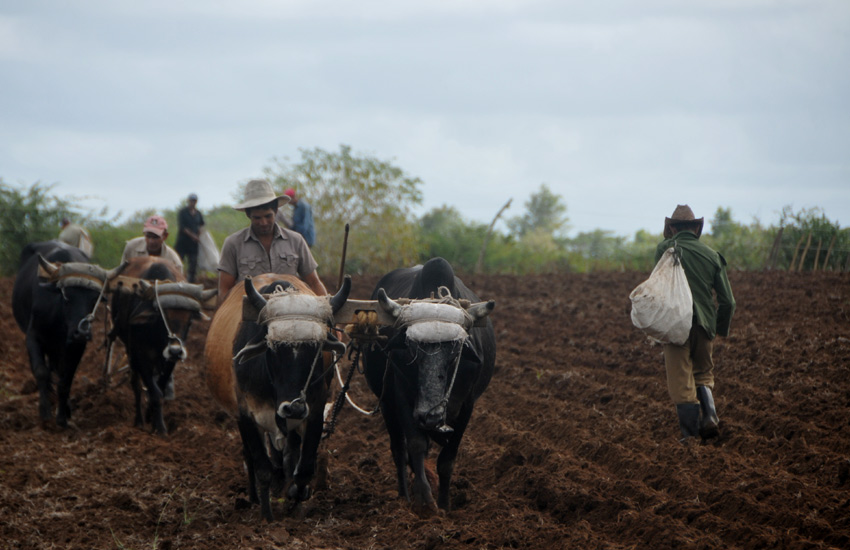
Sowing 11,952 hectares in a planned manner and producing 88,457 tons of viands, grains, vegetables and fruits seems a utopia in a province like Las Tunas, with a scarce rainfall regime and with soils evaluated in more than 80 percent between regular and bad.
Las Tunas, Cuba.- Nevertheless, these numbers constitute the goal, the compass that marks the way for state workers, cooperatives and peasants, if the Municipal Self-Supply Program, which establishes 30 pounds per capita of the different agricultural productions, is to be fulfilled.
As a general picture, this figure includes 21 main crops and each one of them has indicators, depending on the population of each territory.
The plantain, in all its variants, is the best example, considering that it is one of the most demanded products by the inhabitants of this province and that it is an important factor in the diet of children, pregnant women, the elderly, and the sick, fundamentally.
Of this crop, 13.42 hectares should be planted per thousand inhabitants; therefore, the balance exceeds 7,194 hectares for some 534,000 people. Today, 7,636 hectares are planted; that is, 442 more, although not all of them are ready to be harvested since a good part of them correspond to young plantations.
The plan is to continue expanding this crop because every year some areas are demolished. Therefore, more than 2,100 hectares will grow in the current cold season and about 1,300 hectares in the spring season.
With cassava, the same indicator is repeated and there are 5,142 hectares planted, with a deficit of more than 2,000 hectares. Of sweet potato, 1.2 hectares per 1,000 inhabitants are needed. At the end of December, 753.4 hectares were reported, a little more than required; but harvesting and planting will continue since it is a short-cycle product.
In the case of viands, the most worrisome is malanga, whose indicator is two hectares per 1,000 inhabitants. About 490 hectares are required and there are barely 6.7.
As this is a good crop, which does not require many pesticides and chemical fertilizers, it is intended to complete 100 hectares in the cold season 2021-2022, so the producers are selected and the obtaining of seeds for their accelerated reproduction is organized.
In general, in the eight municipalities, the needs are defined and they know what the reality is since the self-supply program establishes that there are 15 pounds of food, 10 pounds of vegetables, two pounds of grains and three pounds of fruits.
In Las Tunas much remains to be done, especially in the use of all the spaces, the contracting of the total of the productions and the subsequent sale at the established prices, without options for illegal commercialization. Only in this way, the numbers will cease to be a utopia.






